The Hippopotamus (Hippopotamus amphibius), commonly called the hippo, is the third-largest land mammal, after elephants and white rhinos. It is a large semi-aquatic mammal native to sub-Saharan Africa. Although the hippo bears a physical resemblance to pigs and other terrestrial even-toed ungulates, the closest living relatives of the Hippopotamidae are cetaceans (whales, dolphins, porpoises, etc.), from which they diverged about 55 million years ago. An adult bull weighs on average 1,500 kg (3,310 lb) while cows weigh 1,300 kg (2,870 lb).
The photos below depict the amusing moment a sun-loving hippo was spotted laying on its back, seemingly in an attempt to tan its bright pink belly. The hippo was lounging around in the water with its legs in the air while it was making the most of the good weather.
Photographer Jackie Cilliers captured the comical, yet intriguing, scene at the Kruger National Park in South Africa while on holiday. At first, Cilliers thought that the mammal may have been hurt, but soon noticed that it was just chilling out in the water while enjoying the sun.
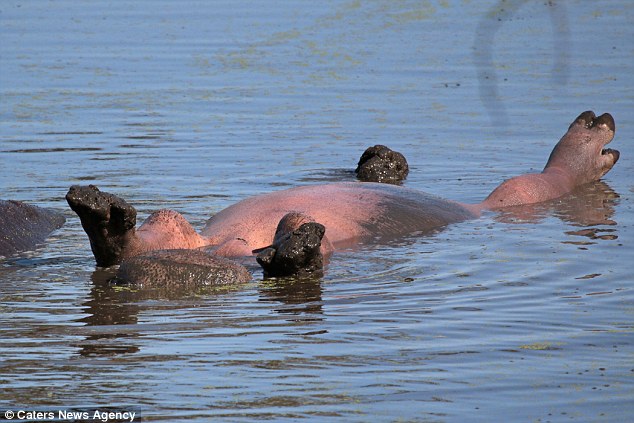
“The images show the hippo pushing off his friend, rolling over, relaxing on his back, and yawning,” said Jackie. “The hippo risked being attacked by its mate whom it kept pushing on to turn over.”
“At first I thought that it might be injured or ill, but it happened several times and remained stationary on its back for several minutes at a time.”
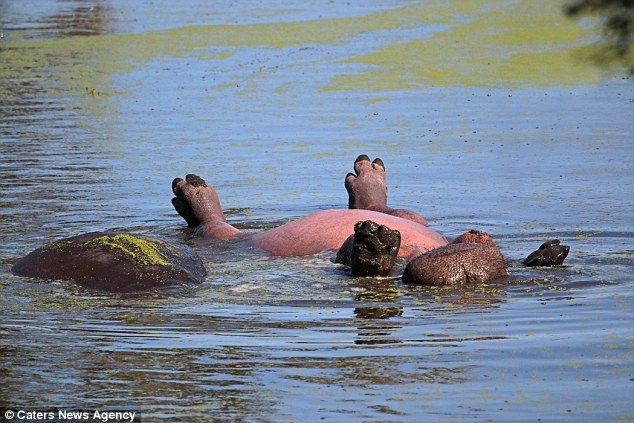
“It seemed to enjoy being upside down. I was surprised and pleased with the images, as were the others in the hide, several people were chuckling at the antics.”
“What I love most is his pink tummy. I doubt I will ever see this again as it is the first time I or anyone I know has seen this.”
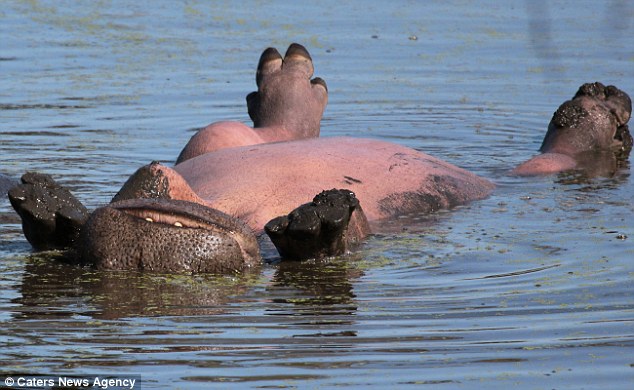
Read on some interesting facts about the hippopotamus while you enjoy these amusing photos.
Hippos have adaptations to their semiaquatic environments, allowing them to move swiftly on both water and land. Their feet have four-webbed toes that splay out to evenly distribute their weight and therefore adequately support them on land. Despite their bulky physique and short legs, they are capable of running 30 km/h (19 mph) over short distances.
Although, they are equipped with webbed feet and can move easily through water, hippos are not particularly good swimmers, nor can they float. They are rarely found in deep water, and when they are, they move by porpoise-like leaps off the bottom. These large mammals glide through the water by propelling themselves off other objects.
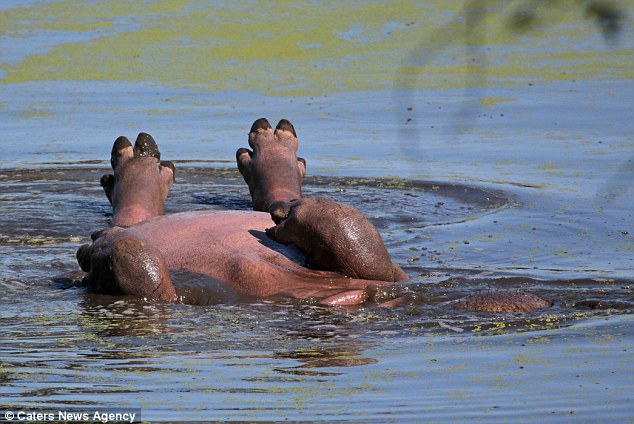
Hippos inhabit rivers, lakes, and mangrove swamps. They require habitat with enough water to submerge themselves in and which has plenty of grass nearby. During the day, hippos remain cool and hydrated by staying in water or mud.
At dusk, they emerge from the water body to graze on grass for 4 to 5 hours, eating about 40 kg (88 pounds) of food, and covering up to 8 km (5 miles) of territory. Grazing is a solitary activity, as opposed to when they are resting next to each other in the water. Usually, hippos do not display territorial behavior on land.

Hippos have very thick skin and a nearly hairless body, except for the thick bristle-like hair on their heads and tails. The outer layers of skin are quite thin, rendering them vulnerable to wounds during fights. Their skin secretes a natural, red-colored sunscreen substance that is sometimes referred to as “blood sweat”, but is neither blood nor sweat. Initially, this secretion is colorless, but it turns red-orange within minutes, eventually becoming brown.

Their powerful jaws are capable of opening up to 150 degrees revealing their enormous incisors which can reach 40 cm (1 ft 4 in), while the canines can grow to up to 50 cm (1 ft 8 in). Hippos are considered the world’s most dangerous large land mammal due to their highly aggressive and unpredictable nature. These large semiaquatic animals kill an estimated 500 people per year in Africa and they are well-equipped to inflict consequent injuries to anything that wanders into their territory.

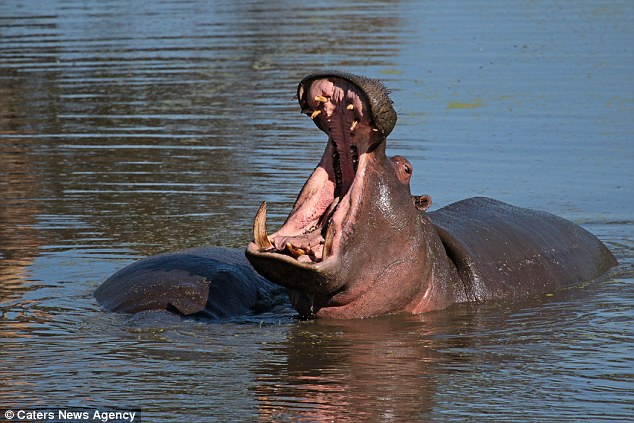
According to the International Union for Conservation of Nature (IUCN), the common hippo isn’t endangered, but it is vulnerable to extinction. The IUCN estimates that there are between 15,000 and 130,000 common hippos remaining in the wild.
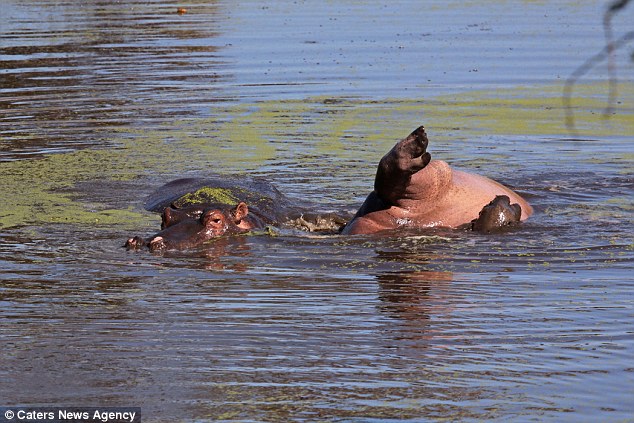
In an attempt to minimize human-wildlife conflict, hundreds of hippos are shot each year. However, it is more likely that this strategy is employed due to the popularity of their meat and also their fat and ivory tusks. At the beginning of the 21st century, the population of the common hippo declined by more than 95 percent in the Democratic Republic of the Congo. About 5.5 tons of hippo teeth were exported from Uganda in 2002, which is equivalent to an estimated 2,000 individuals.
Read more articles:
- Silent Killers of the Sea: Fishing Nets and the Devastating Impact on Our Oceans
- Amazing Ability of Sharks to Regrow Their Dorsal Fins
- Mountain Marvels: 7 Architectural Wonders Built into Nature’s Slopes
- The Frilled Shark: Jaws of the Abyss and a Living Fossil
- 30 Christmas Rock Painting Ideas – Last minute DIY crafts for Christmas decor, gifts and stocking fillers

